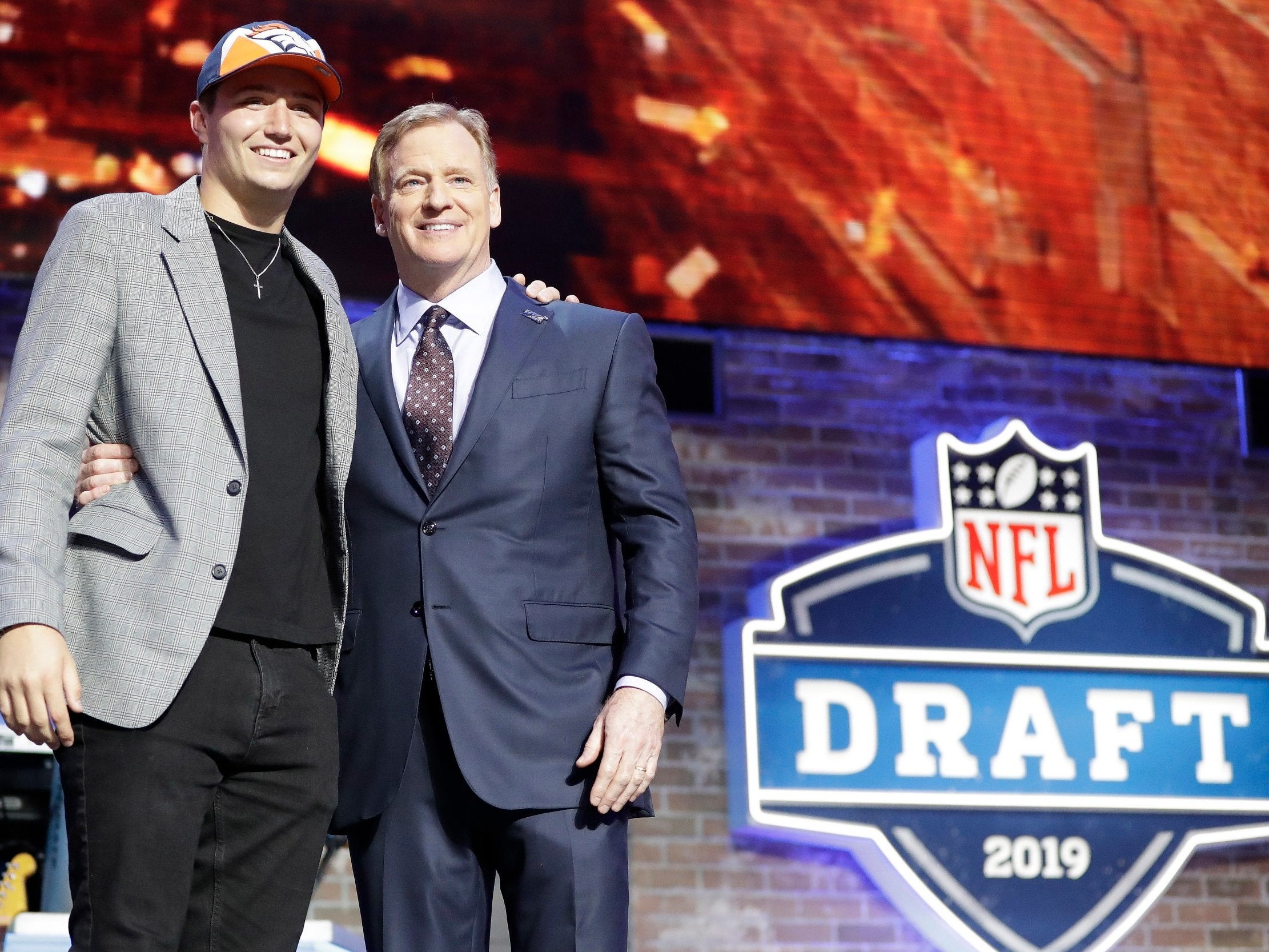The virtual NFL draft is a big opportunity – and a big risk – for tech firms
Coronavirus has brought video-conferencing to the fore. But it hasn’t faced a challenge with stakes as high as this, writes James Moore


Should the NFL be holding its draft – the three-day process that brings the latest crop of superstar college players into the world’s most financially successful sports league – in the midst of a pandemic?
The moral case has been much debated. Purely in business terms, however, it is (with apologies for the basketball metaphor) a slam dunk.
The three-day event affords the NFL the opportunity to host just about the only significant sporting event of any kind globally, even if it’s one that doesn’t involve any athletic competition other than that which can be seen on the selected players’ highlight reels.
From a marketing and viewership perspective, the benefits are potentially enormous given the hunger of a sports mad US, but also a global, population eager for any kind of escape from the grim reality confronting it.
It could also – potentially – serve as the icing on a rich cake for Zoom, the previously little-known video conferencing app that has become a veritable super brand through the course of a crisis that has seen the widespread adoption of remote working.
As a result of lockdown and the need for social distancing, selections will be transmitted to the league via a modified version of Microsoft Teams.
But Zoom is one of the platforms that has been approved for use between team personnel, for the purposes of creating a virtual “war room”. And it’s Zoom that’s received much of the publicity ahead of this “virtual draft”.
This has added fuel to the fire the pandemic has lit under one the world’s hottest stocks. While markets have been characterised by a sea of red, Zoom Video Communications Inc has seen its share price nearly doubling since the end of February.
The app’s use for the UK’s pioneering “virtual parliament” may be more significant, given the importance of the issues being debated at Prime Ministers Questions, but the audience, even with the historic nature of the event, was merely a fraction of what the NFL draft will achieve.
The pressure is therefore on its techies, and all the other techies, to get it right.
When Tory MP Peter Bone faded out during PMQs, Dominic Raab, deputising for Boris Johnson at the dispatch box, was able to say he’d “got the gist” of the question sufficiently well to provide an answer. You can decide for yourself on its quality.
It’s a bit different with the NFL. Teams have a limited time to make their selections and there are no backsies. So what happens if someone cuts out in the midst of making their selection? Or if a team’s internal discussion is interrupted at a key point?
There are fail safes, such as an emergency hotline between teams and the leagues. But the haggling and intrigue that goes on as picks, and players, are traded, may be less intense than usual. While this is a key part of the event’s appeal, teams won’t want to find themselves on the wrong side of a disaster.
Significant attention has been paid to the dangers posed by hacking – and the event is catnip to those with an anarchic or malicious intent. The bigger problem may prove to be bandwidth, or rather the lack of it, hence the efforts made to improve the connections of decision makers.
The dry run doesn’t bode well. It reportedly saw a glitch affecting the Cincinnati Bengals, which owns the all important first pick. “The NFL’s mock draft was a real disaster,” screamed the tabloid New York Post, after reports filtered out.
So the hearts of the league, and of Zoom, and of Microsoft and of the other tech execs involved, will be in their mouths ahead of the real thing because any problems will be seen by an unprecedented audience and the blame game that follows will be swift and brutal.
Take viewership for the recent women’s basketball draft, which was presented on the lightly watched ESPN2 and ESPNU. The WNBA was seen by 387,000, which doesn’t sound like much until you consider the fact that it was an increase of 123 per cent over the 2019 affair.
The 2019 NFL draft averaged a record 6.1 million, up about 11 per cent on 2018, which set the previous high watermark. To put that in context, it’s more than many NBA playoff games achieve. The Thursday high point of 11.1 million was down a little. This year will surely see that reversed.
This year’s programming will be broadcast by ABC, ESPN, the NFL Network and Sky in the UK.
Even with advertising budgets being squeezed, this still represents a dream scenario to those with the capacity and willingness to hawk their wares, and companies with consumer brands have been quick to capitalise.
Budweiser even launched “Boo the Commish” via the internet, promising to deliver them so that Roger Goodell is greeted by the traditional chorus of disdain when the NFL’s top exec traditionally announces the picks, from his basement rather than a podium. If it can be branded, it will be branded.
But the brands of those behind putting the show are at risk. They need to bring their A games.
Join our commenting forum
Join thought-provoking conversations, follow other Independent readers and see their replies
Comments
Bookmark popover
Removed from bookmarks